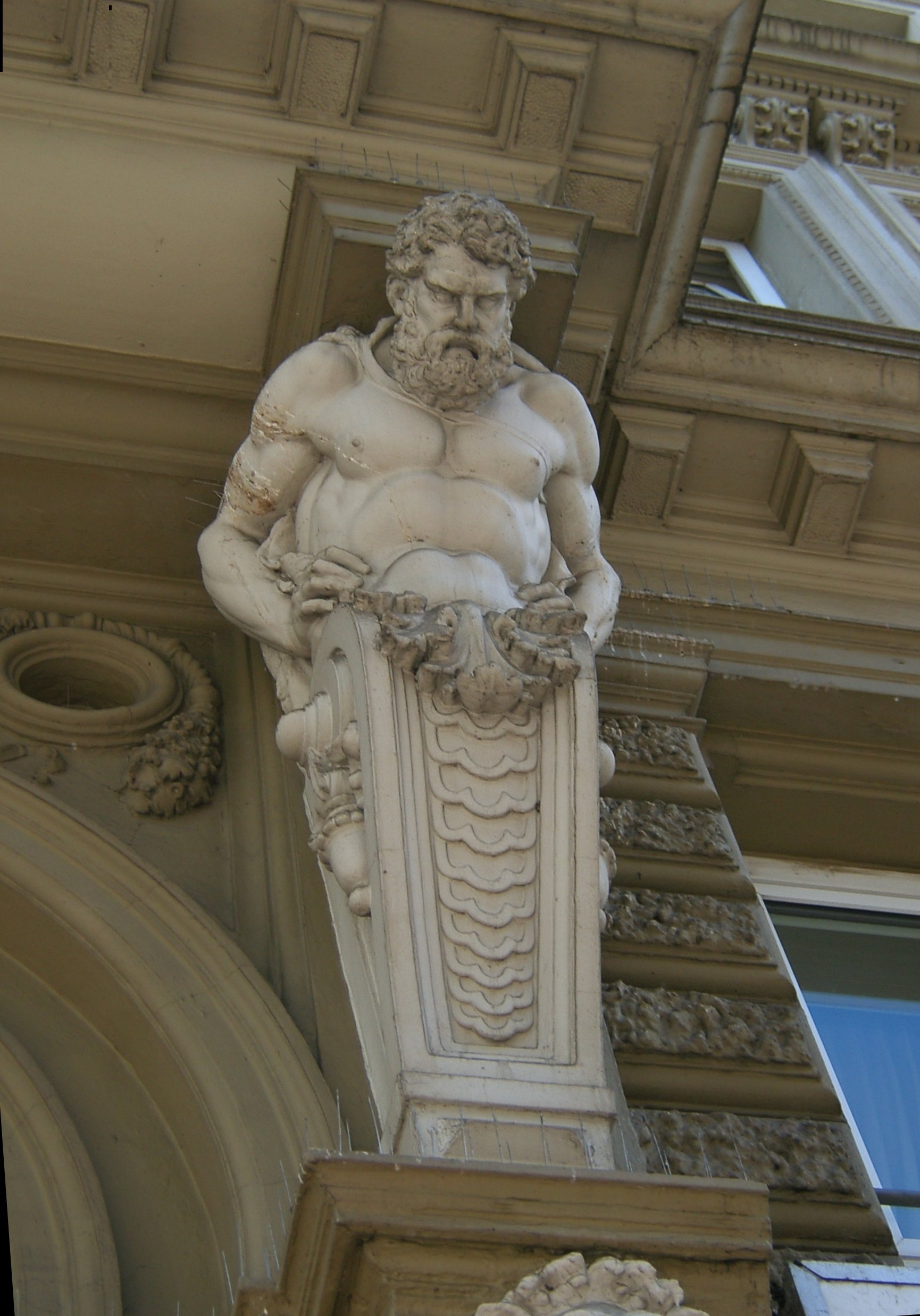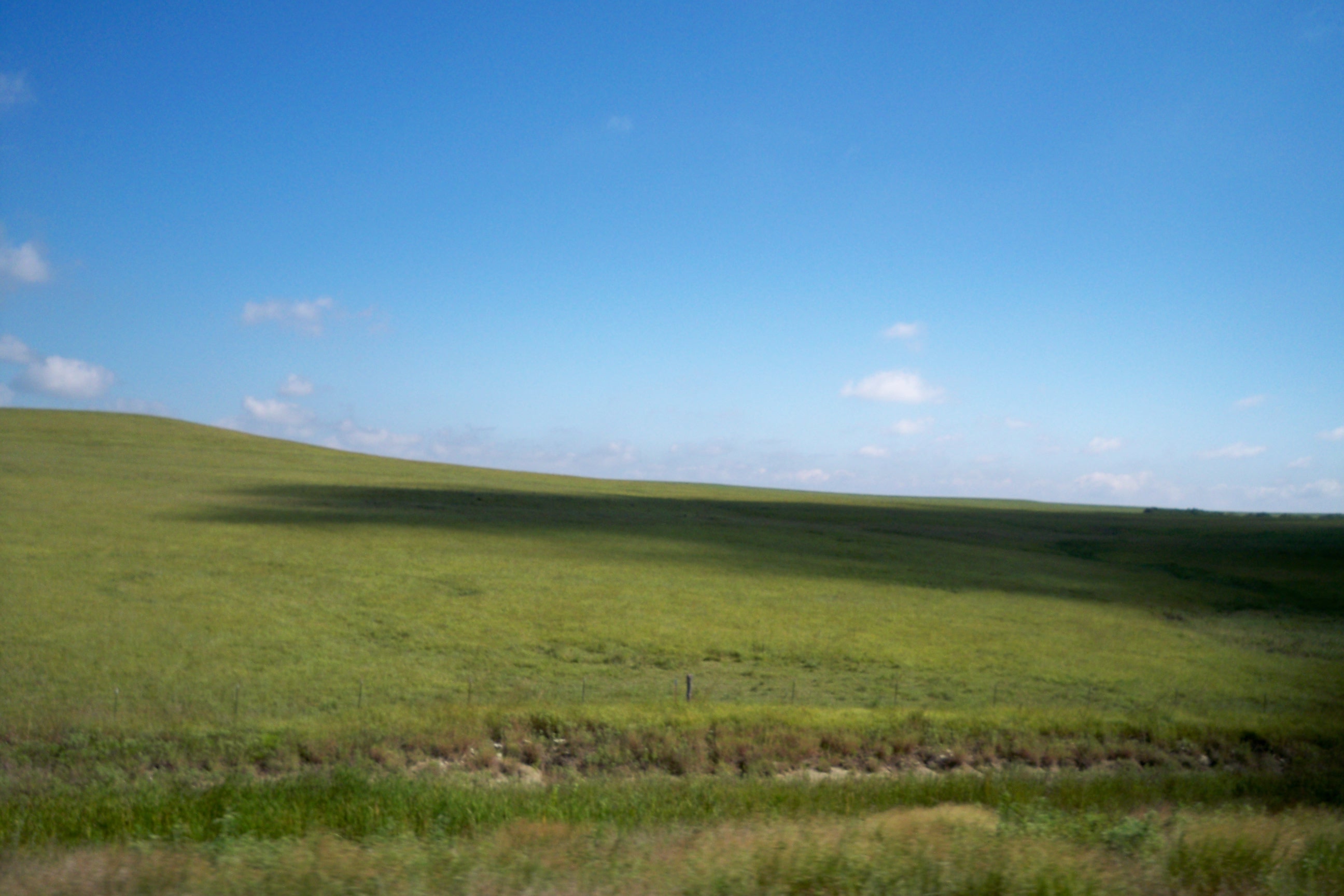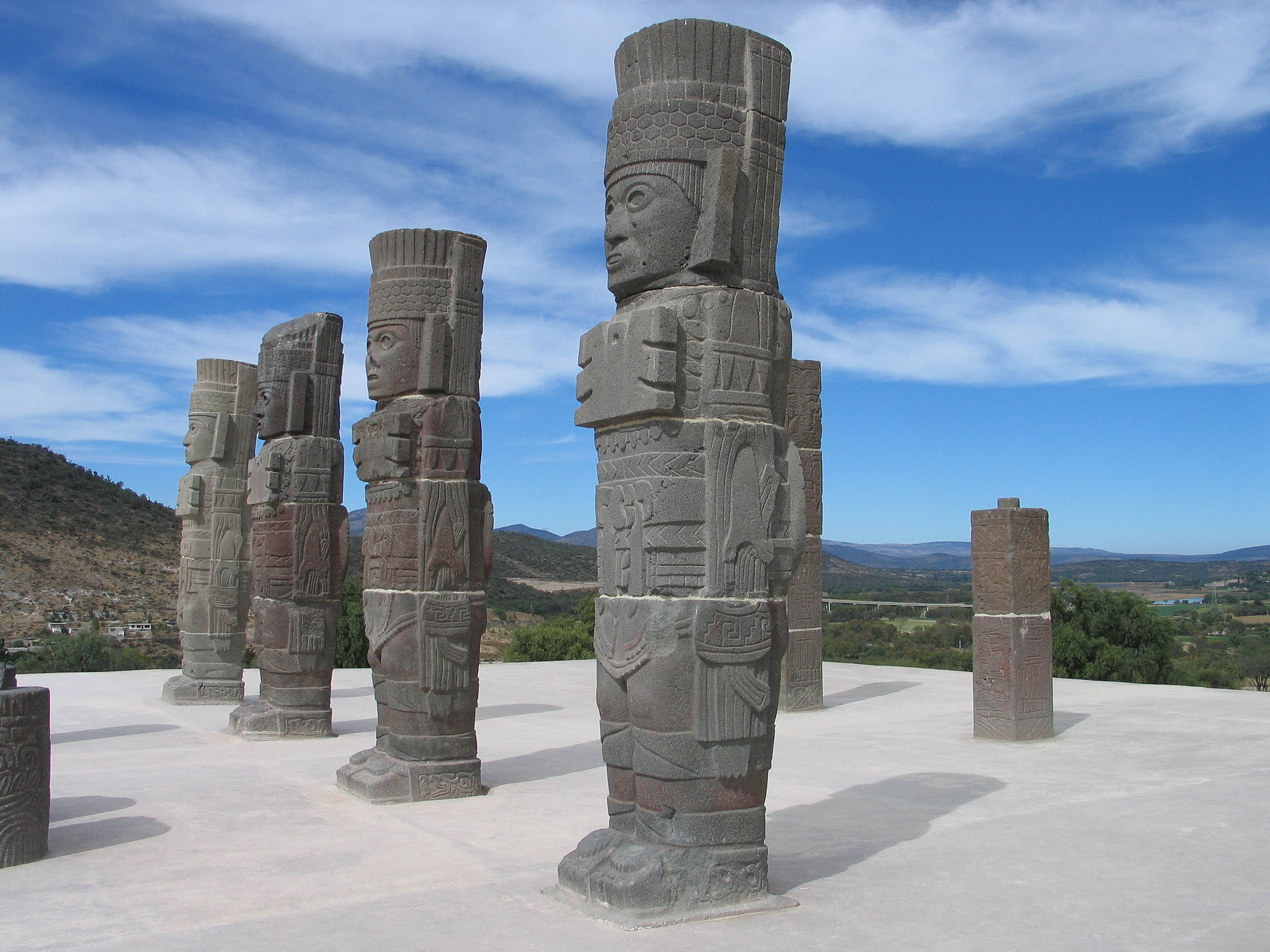|
Tula (Mesoamerican Site)
Tula is a Mesoamerican archeological site, which was an important regional center which reached its height as the capital of the Toltec Empire between the fall of Teotihuacan and the rise of Tenochtitlan. It has not been well studied in comparison to these other two sites, and disputes remain as to its political system, area of influence and its relations with contemporary Mesoamerican cities, especially with Chichen Itza. The site is located in the city of Tula de Allende in the Tula Valley, in what is now the southwest of the Mexican state of Hidalgo, northwest of Mexico City. The archeological site consists of a museum, remains of an earlier settlement called Tula Chico as well as the main ceremonial site called Tula Grande. The main attraction is the Pyramid of Quetzalcoatl, which is topped by four basalt columns carved in the shape of Toltec warriors. Tula fell around 1150, but it had significant influence in the following Aztec Empire, with its history written about heavily i ... [...More Info...] [...Related Items...] OR: [Wikipedia] [Google] [Baidu] |
Atlas (architecture)
In European architectural sculpture, an atlas (also known as an atlant, or atlante or atlantid; plural atlantes)''Aru-Az , Michael Delahunt ArtLex Art Dictionary , 1996–2008. is a support sculpted in the form of a man, which may take the place of a , a or a . The Roman term for such a sculptural support is |
Mexican Plateau
The Central Mexican Plateau, also known as the Mexican Altiplano ( es, Altiplanicie Mexicana), is a large arid-to-semiarid plateau that occupies much of northern and central Mexico. Averaging above sea level, it extends from the US-Mexico border, United States border in the north to the Trans-Mexican Volcanic Belt in the south, and is bounded by the and to the west and east, respectively. A low east-west mountain range in the state of Zacatecas divides the plateau into northern and southern sections. These two sections, called the Northern Plateau () and Central Plateau (), are now generally regarded by geographers as sections of one plateau. The Mexican Plateau is mostly covered by deserts and xeric shrublands, with madrean pine-oak woodlands, pine-oak forests covering the surrounding mountain ranges and forming sky islands on some of the interior ranges. The Mexican Altiplano is one of six distinct physiographic sections of the Basin and Range Province, which in turn is part ... [...More Info...] [...Related Items...] OR: [Wikipedia] [Google] [Baidu] |
Atlatl
A spear-thrower, spear-throwing lever or ''atlatl'' (pronounced or ; Nahuatl ''ahtlatl'' ) is a tool that uses leverage to achieve greater velocity in dart or javelin-throwing, and includes a bearing surface which allows the user to store energy during the throw. It may consist of a shaft with a cup or a spur at the end that supports and propels the butt of the spear. It's usually about as long as the user's arm or forearm. The user holds the spear-thrower in one hand, gripping near the end farthest from the cup. The user puts the butt end of the spear, or dart, in the cup, or grabs the spur with the end of the spear. The spear is much longer than the thrower. The user holds the spear parallel to the spear-thrower and going in the other direction. The user can hold the spear, with the index and thumb, with the same hand as the thrower, with the other fingers. The user reaches back with the spear pointed at the target. Then they make an overhand throwing motion with the thrower ... [...More Info...] [...Related Items...] OR: [Wikipedia] [Google] [Baidu] |
Atlantean Figures (Mesoamerica)
The Atlantean figures are four anthropomorphic statues belonging to the Toltec culture in pre-Columbian Mesoamerica. These figures are "massive statues of Toltec warriors". They take their post-Columbian name from the European tradition of similar Atlas (architecture), Atlas or Atalante figures in classical architecture. Though the most famous Atlantean figures reside in Tula, the Olmecs were the first to use Atlantean figures on a relief discovered in Potrero Nuevo. Mayan sculptors also created "Atlantean" figures in Chichen Itza. Furthermore, the Aztecs also created warrior statues strongly inspired by these Atlantean figures in Tula. Composition The Atlantean figures in Tula are hand-carved statues made from the available stone in the area: limestone, sandstone, and volcanic rock. To carve them, sculptors would have used stone tools, such as chisels for fine sculpting, scrapers of various sizes, and stone hammers. Additional smaller and softer stones were used for smoothing ... [...More Info...] [...Related Items...] OR: [Wikipedia] [Google] [Baidu] |
Mesoamerican Ballcourt
A Mesoamerican ballcourt ( nah, tlachtli) is a large masonry structure of a type used in Mesoamerica for over 2,700 years to play the Mesoamerican ballgame, particularly the hip-ball version of the ballgame. More than 1,300 ballcourts have been identified, 60% in the last 20 years alone. Although there is a tremendous variation in size, in general all ballcourts are the same shape: a long narrow alley flanked by two walls with horizontal, vertical, and sloping faces. Although the alleys in early ballcourts were open-ended, later ballcourts had enclosed end-zones, giving the structure an -shape when viewed from above. Ballcourts were also used for functions other than, or in addition to, ballgames. Ceramics from western Mexico show ballcourts being used for other sporting endeavours, including what appears to be a wrestling match. It is also known from archaeological excavations that ballcourts were the sites of sumptuous feasts, although whether these were conducted in the contex ... [...More Info...] [...Related Items...] OR: [Wikipedia] [Google] [Baidu] |
Guadalupe Mastache
Guadalupe or Guadeloupe may refer to: Places Bolivia * Guadalupe, Potosí Brazil * Guadalupe, Piauí, a municipality in the state of Piauí * Guadalupe, Rio de Janeiro, a neighbourhood in the city of Rio de Janeiro Colombia * Guadalupe, Antioquia, a municipality and town * Guadalupe, Huila, a municipality and town * Guadalupe, Santander, a municipality and town * Guadalupe Hill, a hill in Bogotá Costa Rica * Guadalupe, Costa Rica, a suburb of San José, Costa Rica El Salvador * Guadalupe, San Vicente France * Guadeloupe, a French overseas department in the Caribbean Mexico * Guadalupe, Baja California * Guadalupe, Chihuahua * Guadalupe, Nuevo León, part of the metropolitan area of Monterrey * Guadalupe Etla, Oaxaca * Guadalupe, Puebla, see Municipalities of Puebla * Guadalupe, Zacatecas * Guadalupe de Ramírez, Oaxaca * Guadalupe y Calvo, Chihuahua * Villa de Guadalupe, Mexico City, a town near Mexico City, now a suburb incorporated into the city * Presa de Guadalupe ... [...More Info...] [...Related Items...] OR: [Wikipedia] [Google] [Baidu] |
Jorge R
Jorge is a Spanish and Portuguese given name. It is derived from the Greek name Γεώργιος (''Georgios'') via Latin ''Georgius''; the former is derived from (''georgos''), meaning "farmer" or "earth-worker". The Latin form ''Georgius'' had been rarely given in Western Christendom since at least the 6th century. The popularity of the name however develops from around the 12th century, in Occitan in the form ''Jordi'', and it becomes popular at European courts after the publication of the ''Golden Legend'' in the 1260s. The West Iberian form ''Jorge'' is on record as the name of Jorge de Lencastre, Duke of Coimbra (1481–1550). List of people with the given name Jorge * Jorge (footballer, born 1946), Brazilian footballer * Jorge (Brazilian singer), Brazilian musician and singer, Jorge & Mateus * Jorge (Romanian singer), real name George Papagheorghe, Romanian singer, actor, TV host * Jorge Betancourt, Cuban diver * Jorge Campos, Mexican football player * Jorge Cantú, b ... [...More Info...] [...Related Items...] OR: [Wikipedia] [Google] [Baidu] |
Tula River
The Tula River ( es, Río Tula) is a river in Hidalgo State in central Mexico, and a tributary of the Moctezuma River. Geography It runs through the city of Tula de Allende and begins as a drainage channel for the Valley of Mexico, which contains the metropolitan Mexico City region. The Moctezuma River is a tributary of the Pánuco River. The river is significantly contaminated with both organic and inorganic substances. Tilapia caught from the Tula river contain levels of lead that greatly exceed the established safety limits for consumption. Unusually high levels of cadmium, arsenic and lead were found in samples of Tula zooplankton Zooplankton are the animal component of the planktonic community ("zoo" comes from the Greek word for ''animal''). Plankton are aquatic organisms that are unable to swim effectively against currents, and consequently drift or are carried along by .... References Rivers of Hidalgo (state) Tributaries of the Pánuco River {{Mexico- ... [...More Info...] [...Related Items...] OR: [Wikipedia] [Google] [Baidu] |
Spanish Conquest Of The Aztec Empire
The Spanish conquest of the Aztec Empire, also known as the Conquest of Mexico or the Spanish-Aztec War (1519–21), was one of the primary events in the Spanish colonization of the Americas. There are multiple 16th-century narratives of the events by Spanish conquistadors, their indigenous allies, and the defeated Aztecs. It was not solely a contest between a small contingent of Spaniards defeating the Aztec Empire but rather the creation of a coalition of Spanish invaders with tributaries to the Aztecs, and most especially the Aztecs' indigenous enemies and rivals. They combined forces to defeat the Mexica of Tenochtitlan over a two-year period. For the Spanish, the expedition to Mexico was part of a project of Spanish colonization of the New World after twenty-five years of permanent Spanish settlement and further exploration in the Caribbean. Significant events in the conquest of Mesoamerica Historical sources for the conquest of Mexico recount some of the same events in bot ... [...More Info...] [...Related Items...] OR: [Wikipedia] [Google] [Baidu] |
Valley Of Mexico
The Valley of Mexico ( es, Valle de México) is a highlands plateau in central Mexico roughly coterminous with present-day Mexico City and the eastern half of the State of Mexico. Surrounded by mountains and volcanoes, the Valley of Mexico was a centre for several pre-Columbian civilizations, including Teotihuacan, the Toltec, and the Aztec. The ancient Aztec term ('Land Between the Waters') and the phrase Basin of Mexico are both used at times to refer to the Valley of Mexico. The Basin of Mexico became a well known site that epitomized the scene of early Classic Mesoamerican cultural development as well. The Valley of Mexico is located in the Trans-Mexican Volcanic Belt. The valley contains most of the Greater Mexico City, Mexico City Metropolitan Area, as well as parts of the State of Mexico, Hidalgo (state), Hidalgo, Tlaxcala, and Puebla. The Basin of Mexico covers approximately in the NNE-SSW direction with length to width dimensions of approximately to The Valley of ... [...More Info...] [...Related Items...] OR: [Wikipedia] [Google] [Baidu] |
Cholula (Mesoamerican Site)
Cholula (; nah, Cholōllān) was an important city of pre-Columbian Mesoamerica, dating back to at least the 2nd century BCE, with settlement as a village going back at least some thousand years earlier. The site of Cholula is just west of the modern city of Puebla and served as a trading outpost. Its immense pyramid is the largest such structure in the Americas, and the largest pyramid structure by volume in the world. Cholula was one of the key religious centers of ancient Mexico.McCafferty, Geoffrey G. "Cholula." In Davíd Carrasco (ed). ''The Oxford Encyclopedia of Mesoamerican Cultures''. : Oxford University Press, 2001. Location and environment Cholula is located in the Puebla-Tlaxcala Valley of the central Mexican highlands. It is surrounded to the west by the snow-covered peaks Popocatepetl and Iztaccihuatl, and Malinche to the north. The summer rainy season and the melted snow in winter provide a great environment for irrigation agriculture. There is also a confl ... [...More Info...] [...Related Items...] OR: [Wikipedia] [Google] [Baidu] |


.jpg)




